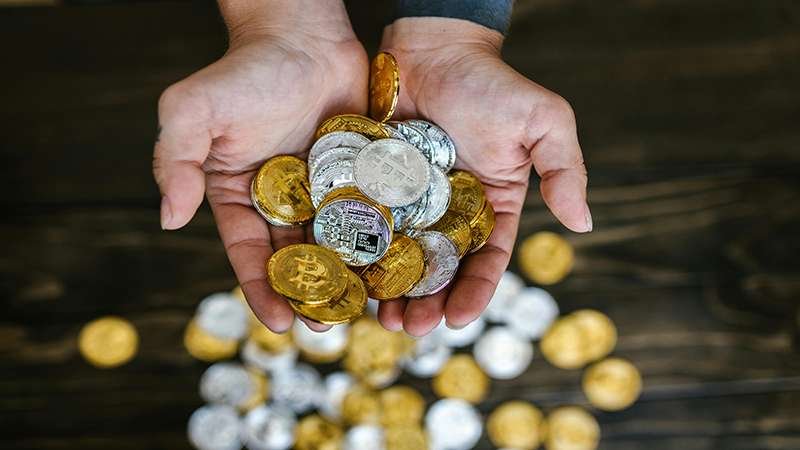How to Trade Cryptocurrency for Beginners: A Simple Guide
Trading cryptocurrency can be exciting and profitable, but it can also be confusing if you’re just starting out. This easy-to-understand guide will walk you through everything you need to know to get started with cryptocurrency trading.
1. What is Cryptocurrency?
Cryptocurrency is a type of digital money that uses encryption to secure transactions. Unlike regular money issued by banks or governments, cryptocurrencies operate on decentralized systems called blockchains. This means no single entity controls them, making transactions more transparent and secure.
2. Choosing the Right Exchange
A cryptocurrency exchange is an online marketplace that allows users to purchase, sell, and exchange digital currencies. Here’s what to look for when choosing an exchange:
- Security: Ensure the exchange has strong security features like two-factor authentication (2FA) and cold storage for funds, which means storing funds offline to protect them from hacking.
- Fees: Be aware of the costs associated with trading, depositing, and withdrawing funds. Different exchanges have different fee structures.
- Available Cryptocurrencies: Check if the exchange offers the cryptocurrencies you’re interested in trading.
- User-Friendliness: An intuitive interface is crucial, particularly for those new to the platform.
Some beginner-friendly exchanges include Coinbase, Binance, Kraken, and Gemini. These platforms are known for their security, ease of use, and range of available cryptocurrencies.
3. Setting Up Your Account
Here’s how to get started on an exchange:
- Sign Up: Create an account by providing your email address and creating a strong password.
- Verify Your Identity: Most exchanges require you to verify your identity for security and regulatory reasons. This typically involves uploading a photo ID and other documents.
- Enable Two-Factor Authentication (2FA): This adds an extra layer of security by requiring a second form of identification, such as a code from your smartphone, in addition to your password.
4. Adding Funds to Your Account
To start trading, you need to deposit money into your exchange account. Here are the common methods:
- Bank Transfer: You can transfer money from your bank account to the exchange. This method might take a few days to process.
- Credit/Debit Card: Some exchanges allow you to deposit money using a credit or debit card for quicker transactions.
- Cryptocurrency: If you already own some cryptocurrencies, you can transfer them directly to your exchange account.
5. Picking Your First Cryptocurrency

As a beginner, it’s best to start with well-known and established cryptocurrencies such as:
- Bitcoin (BTC): The original and most well-known digital currency.
- Ethereum (ETH): Known for its smart contract capabilities, allowing developers to build decentralized applications.
- Litecoin (LTC): Often referred to as the silver to Bitcoin’s gold, Litecoin offers faster transaction times.
6. Understanding Orders
When you’re ready to trade, you’ll need to understand the types of orders you can place:
- Market Orders: These transactions occur instantly at the prevailing market rate. They are straightforward and ideal for beginners who want to make quick transactions.
- Limit Orders: These orders execute only at a specific price you set. They give you more control over the price at which you buy or sell, but they may not execute immediately if the market doesn’t reach your set price.
7. Creating a Trading Strategy

A well-defined trading plan enables you to make knowledgeable and strategic decisions. Here are some common strategies:
- Day Trading: Buying and selling within the same day to take advantage of short-term price movements. This demands vigilant observation of the market and rapid decision-making.
- Swing Trading: Holding positions for several days to weeks to capitalize on expected market swings. This strategy is less hectic than day trading and can capture larger price movements.
- Hodling: Holding onto your cryptocurrency for a long time, regardless of short-term price fluctuations, based on the belief that its value will increase over time.
8. Analyzing the Market

To trade effectively, you need to analyze the market. There are two main methods:
- Technical Analysis: This involves looking at price charts, trading volumes, and other market data to predict future price movements. Tools like moving averages, RSI, and MACD are commonly used in technical analysis.
- Fundamental Analysis: This involves evaluating the cryptocurrency’s underlying technology, the team behind it, market demand, and other factors to determine its long-term value. For example, understanding the impact of a major software upgrade or a new partnership.
9. Managing Risks
Trading is risky, so it’s important to manage your risks. Here are some tips:
- Diversifying: Don’t put all your money into one cryptocurrency. Diversify your investments by allocating funds to various assets to mitigate risk.
- Using Stop-Loss Orders: These orders automatically sell your cryptocurrency if the price drops to a certain level, helping to limit your losses.
- Investing Only What You Can Afford to Lose: The cryptocurrency market is very volatile. Only invest money that won’t impact your finances if you lose it.
10. Staying Informed
Stay informed about market news and updates by:
- Following News Sites: Websites like CoinDesk and Coin Telegraph provide reliable news and updates on the cryptocurrency market.
- Joining Online Communities: Platforms like Reddit and Bitcoin Talk have active communities where you can learn from experienced traders and discuss market trends.
- Subscribing to Newsletters and Podcasts: Many experts share their insights and analyses through newsletters and podcasts, which can help you stay informed about market developments.
11. Avoiding Scams

As cryptocurrencies have become more popular, so have scams targeting investors. Be cautious of:
- Phishing Scams: Fake websites or emails designed to steal your login credentials and funds. Always double-check URLs and never click on suspicious links.
- Pump and Dump Schemes: Scammers artificially inflate the price of a cryptocurrency to attract investors and then quickly sell off their holdings, leaving other investors with losses.
- Fake ICOs: Initial coin offerings that promise high returns but disappear with investors’ money. Before investing, make sure to thoroughly investigate the project and the team involved.
Conclusion
Trading cryptocurrency can be rewarding if you have the right knowledge and strategy. By following this guide, you’ll be better prepared to start trading confidently and wisely. Remember to start small, stay informed, and manage your risks.
Happy trading😊
FAQ’s
1. What is cryptocurrency?
Cryptocurrency is a type of digital money that uses encryption to secure transactions. Unlike traditional money from banks or governments, cryptocurrencies operate on decentralized networks called blockchains. This means they are not controlled by any central authority, making transactions more transparent and secure.
2. How do I start trading cryptocurrency?
To start trading cryptocurrency, follow these steps:
Choose an Exchange: Select a platform like Coinbase, Binance, Kraken, or Gemini.
Create an Account: Sign up with your email and create a strong password.
Verify Your Identity: Provide a photo ID and other required documents.
Add Funds: Deposit money using a bank transfer, credit/debit card, or cryptocurrency.
Start Trading: Buy and sell cryptocurrencies using market or limit orders.
3. What are market orders and limit orders?
Market Orders: These execute immediately at the current market price. They are simple and quick, making them ideal for beginners.
Limit Orders: These execute only at a specific price you set. They give you more control over the buying or selling price but may not execute immediately if the market doesn’t reach your specified price.
4. How do I keep my cryptocurrency safe?
To keep your cryptocurrency safe, follow these tips:
Enable Two-Factor Authentication (2FA): Adds an extra layer of security to your account.
Use Secure Passwords: Create strong, unique passwords for your accounts.
Store Cryptocurrencies in a Wallet: Use hardware wallets or secure software wallets rather than leaving them on exchanges.
Beware of Phishing Scams: Avoid clicking on suspicious links and double-check URLs before entering your information.
What are the risks of trading cryptocurrency?
Cryptocurrency trading involves several risks, including:
Market Volatility: Prices can fluctuate wildly, leading to potential losses.
Security Risks: Hacking and scams can result in losing your funds.
Regulatory Risks: Changes in laws and regulations can impact the market.
Emotional Trading: Making decisions based on emotions rather than strategy can lead to losses.

2 responses to “How to Trade Cryptocurrency for Beginners: A Simple Guide”
Best information of cryptocurrency trading
Brilliantly explained